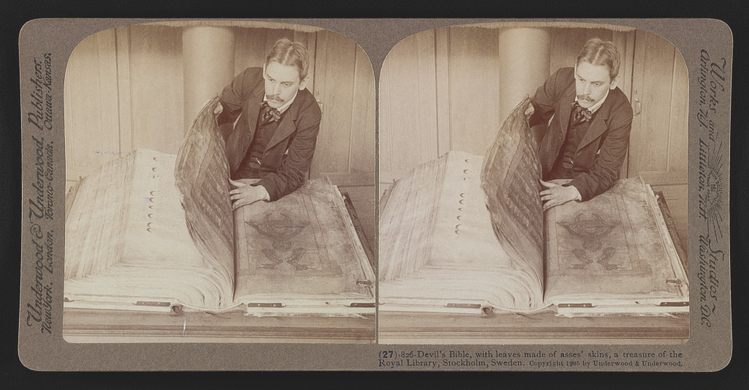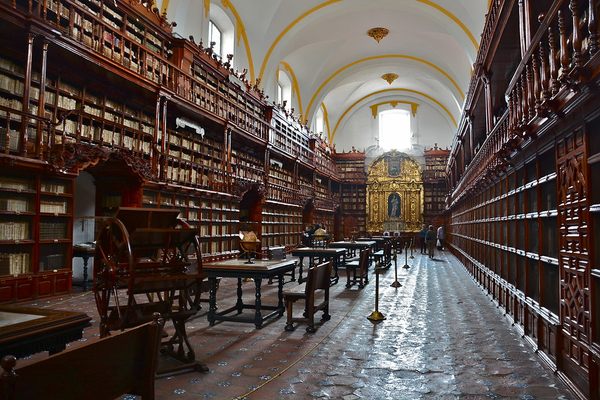AO Edited
Codex Gigas (The Devil's Bible)
An illuminated manuscript comprising the life's work of a lone monk, inexplicably decorated with a portrait of Satan himself.
The largest medieval manuscript in the world is believed to have been the work of a single monk in Bohemia (in modern Czechia). Though it is made up of 620 hand-lettered pages that measure three feet tall, what makes it remarkable is the devil contained therein.
The Codex Gigas (meaning “giant book”) was created in the 13th century and originally stored in the Benedictine monastery at Podlažice. The manuscript contains not only the New and Old Testaments, but also an assortment of other shorter texts addressing matters of extreme practicality for the time: exorcism, grammar, a calendar, and medical works, to name a few.
Everything within the book was handwritten by a single anonymous monk. The National Library of Sweden puts this massive undertaking into perspective:
“If the scribe worked for six hours a day and wrote six days a week this means that the manuscript could have taken about five years to complete. If the scribe was a monk he may only have been able to work for about three hours a day, and this means that the manuscript could have taken ten years to write. As the scribe may also have ruled the lines to guide the writing before he began to write (it probably took several hours to rule one leaf), this extends the period it took to complete the manuscript. The scribe also decorated the manuscript, so this all means that the manuscript probably took at least 20 years to finish, and could even have taken 30.”
These elements alone are enough to qualify the stunning manuscript as a wonder of the world. Yet the most bewitching element of the Codex Gigas is a single page of illumination that defies explanation, tucked away within the tome. Spanning nearly the entire face of a page is a full-color rendering of the Dark Lord himself.
Speculation, plausible and otherwise, abounds as to how the unholiest feature possible made its way into this most sacred text, but answers remain elusive. Precisely because of this tension, everyone loves the Codex Gigas—or, the Devil’s Bible, if you prefer. The manuscript originally traveled to Stockholm in the late 16th century, plundered from the Holy Roman Emperor’s castle by the Swedish army during the Thirty Years War.
This massive tome currently resides behind glass in a room on the second floor of the King’s Library (also called the National Library of Sweden) in Humlegården (“Humle” meaning “hops,” suggesting royalty grew hops there for their beer, “gården” meaning “courtyard”), a lovely park in the posh Stockholm neighborhood of Östermalm.
The manuscript is kept closed and in a fairly dark room because of possible damage from light. There is a movie describing the history of the Codex in Swedish with English subtitles playing on a loop.
If you want to see inside the Codex Gigas, you can look through a digitized version of the manuscript thanks to the Library of Congress. Full-sized reproductions of the Codex Gigas are also available, but they come at quite a hefty price.
For even more on the Codex Gigas, continue reading its feature as Atlas Obscura’s Object of Intrigue.
Know Before You Go
You must leave backpacks and large bags in the lockers next to the cafe on the entry (fifth) floor. Take the elevator down to the second floor and there is a room on the left side where the Codex is kept.































Follow us on Twitter to get the latest on the world's hidden wonders.
Like us on Facebook to get the latest on the world's hidden wonders.
Follow us on Twitter Like us on Facebook